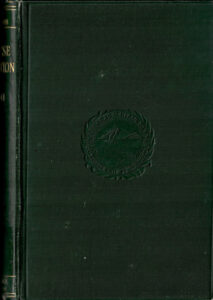In May I published a number of quotes from Bruno Petzold’s book, Buddhist Prophet Nichiren–A Lotus In The Sun, examining the Tendai view of Nichiren’s doctrine. Petzold based his understanding of Nichiren and his doctrine on three books:

- Nichiren, the Buddhist Prophet by Anesaki Masaharu, 1916
- Japanese Civilization: Its Significance and Realization, Nichirenism and the Japanese National Principles by Satomi Kishio, 1923
- Nichiren-shū kōyō (Manual of the Nichiren Sect), Shimizu Ryōzan, 1928
Since I already have Anesaki Masaharu on this website, I went looking for the other two books. I couldn’t find Shimizu Ryōzan’s “Nichiren-shū kōyō” (Manual of the Nichiren Sect), but Satomi Kishio’s book is available online and in print. (Download a PDF copy.)
Satomi was born in 1897, the youngest son of Chigaku Tanaka and his second wife, Ogawa Hiroko. He died in 1974. In writing the book, Satomi sought to bring his father’s work to the Western world. As he explains in the Author’s Preface:
The chief object of the present work is to make accessible to Western scholars and all people one of the very important aspects of Japanese spiritual civilization which is, in a sense, a result of our synthetic creation by harmonization and unification of several elements. The Author has treated Nichiren’s Religion, known as the True Mahayana Buddhism, and the Japanese National Principles in this volume, to which he begs to draw the attention of readers.
The book’s objective is detailed in an Introduction written by G.F. Barwick in 1923.
Professor Satomi, although so far unknown in England, is well known in Japan, both as an author of works relating to Nichirenism and as the youngest son of Mr. Chigaku Tanaka, the leading authority on the life and writings of the apostle of Buddhist reformation. There is a powerful society in Japan, the Kokuchukai, of which Mr. Chigaku Tanaka is the president. It is composed entirely of laymen, and its object is to present the ideal religious life, as revealed by Nichiren, free from any obscurities which formalism and the misdirected zeal of various sects may have induced. The activities of this society are mainly directed towards spreading the idea of practical religion over every aspect of life and bringing the religious influence to bear not only on personal work like art and science, but on the collective work of politics, economics, and military affairs. Mr. Chigaku Tanaka is the one who may be said to be the most active since Nichiren’s death in 1282 in spreading the doctrine, or perhaps one ought rather to say the ideas, of Nichiren; and his son is an enthusiastic worker in the same field.
Of Nichiren’s religion it may suffice to say here that its main ideas are: the communion of those living now and henceforth with all who have gone before, and the restoration of primeval connection with the eternal Buddha; and that it is not the worship of an abstract truth, but a life to be lived by every being, human or other, in the identity of man with nature. Nichiren was imbued with the strongest faith that Japanese Buddhism would spread from East to West, and his disciples are earnestly endeavoring to make his prophetic vision a present reality. The Nichirenians count their temples by thousands and their adherents by millions, and may claim recognition as one of the religious forces of the world.
At the time Barwick wrote this he was the “Assistant-Keeper of Printed Books and Superintendent of Reading-room of the British Museum.” I’ve found no explanation of his connection to Satomi or his expertise in Japanese religions. His claim that “Nichirenians count their temples by thousands and their adherents by millions, and may claim recognition as one of the religious forces of the world” only stands if “Nichirenians” include all of the various sects who see Nichiren as their founder. Tanaka’s Kokuchukai, Pillar of the Nation Society, which he founded in 1880 as Rengekai (Lotus Blossom Society), certainly never counted it’s adherents by the millions nor did it possess any temples.
For my purposes, I’ll be publishing quotes from the book illustrating where I see Nichirenism (Nichirenshugi in Japanese) diverges from modern Nichiren Buddhism but also where it points to weaknesses in today’s implementation of Nichiren’s teachings. I’m particularly moved by the desire of Tanaka and his son to “emancipate religion from the dark interior of the church right into joyful human life.”
